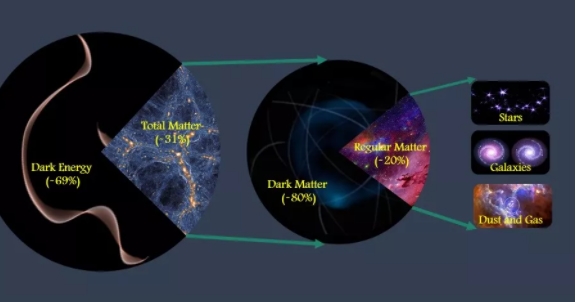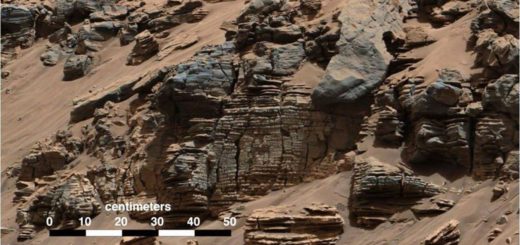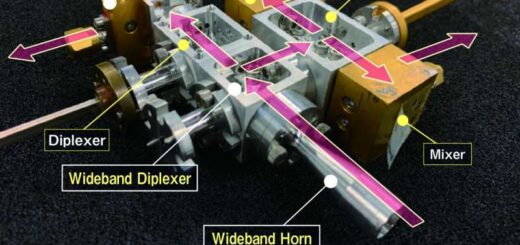Scientists nail down the total amount of matter in the universe

Scientists have conducted a new census of the amount of matter in the cosmos, finding that the stuff makes up 31% of our universe.
“To put that amount of matter in context, if all the matter in the universe were spread out evenly across space, it would correspond to an average mass density equal to only about six hydrogen atoms per cubic meter [about 35 cubic feet],” Mohamed Abdullah, a graduate student in the Department of Physics and Astronomy at the University of California, Riverside (UCR), said in a statement.
“However, since we know 80% of matter is actually dark matter, in reality, most of this matter consists not of hydrogen atoms but rather of a type of matter which cosmologists don’t yet understand,” said Abdullah, who led a new study announcing the result.
Related: The history and structure of the universe (infographic)
Click here for more Space.com videos…
The study, which was published online Friday (Sept. 25) in The Astrophysical Journal, suggests that 69% of the cosmos’ matter-energy budget is dark energy, a mysterious force thought to be responsible for our universe’s accelerating expansion.
That number is in rough agreement with previous estimates, which astronomers have calculated via a variety of methods. For example, the team behind Europe’s Planck satellite, which scrutinized the cosmic microwave background — the glow left over from the Big Bang — determined in 2013 that dark energy makes up 68.3% of the universe.
The new study also reaffirms the piddling 5% contribution of “normal” matter, the stuff that makes up stars, planets, trees, oceans and everything else that we can directly see and touch.
Abdullah and his colleagues arrived at their number by studying galaxy clusters. The researchers developed a tool that measures a cluster’s mass by examining the orbits of its member galaxies. They applied this tool to observations made by the Sloan Digital Sky Survey, a wide-ranging campaign that uses a telescope in New Mexico, creating a cluster catalog that the researchers then compared to numerical simulations.
Such comparison — observed cluster numbers and masses versus modeled predictions — is a proven technique for determining the universe’s total matter content, the study team explained. That’s because clusters, which take billions of years to form, are a sort of cosmological probe. Their observed numbers are sensitive to a number of variables, particularly the universe’s total matter content.
The team compared the number of galaxy clusters they measured with predictions from numerical simulations to determine which answer was “just right.”
The team compared the number of galaxy clusters they measured with predictions from numerical simulations to determine which answer was “just right,” Goldilocks-style. (Image credit: UCR/Mohamed Abdullah)
“We have succeeded in making one of the most precise measurements ever made using the galaxy cluster technique,” study co-author Gillian Wilson, a professor of physics and astronomy at UCR who leads the lab in which Abdullah works, said in the same statement.
“Moreover, this is the first use of the galaxy orbit technique, which has obtained a value in agreement with those obtained by teams who used noncluster techniques,” such as the Planck researchers’ cosmic microwave background method, she added.
Indeed, the 31% figure is a “best combined value,” at which Abdullah and his team arrived after combining their cluster results with previous calculations performed using a variety of techniques, the researchers said.



 Creators of mankind
Creators of mankind Description of “Tall white aliens”
Description of “Tall white aliens” Where they came from?
Where they came from? About hostile civilizations
About hostile civilizations The war for the Earth
The war for the Earth “Tall white aliens” about eternal life
“Tall white aliens” about eternal life Video: “Nordic aliens”
Video: “Nordic aliens” Aliens
Aliens Alien encounters
Alien encounters The aliens base
The aliens base UFO
UFO Technology UFO
Technology UFO Underground civilization
Underground civilization Ancient alien artifacts
Ancient alien artifacts Military and UFO
Military and UFO Mysteries and hypotheses
Mysteries and hypotheses Scientific facts
Scientific facts


















